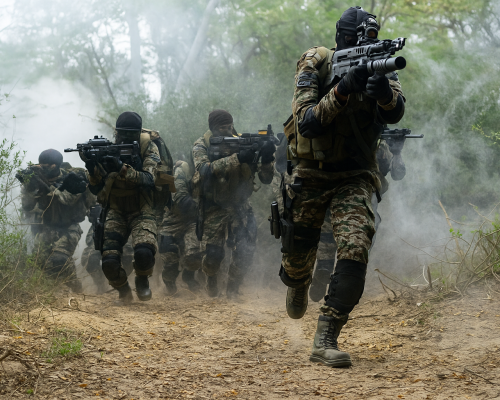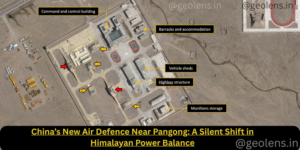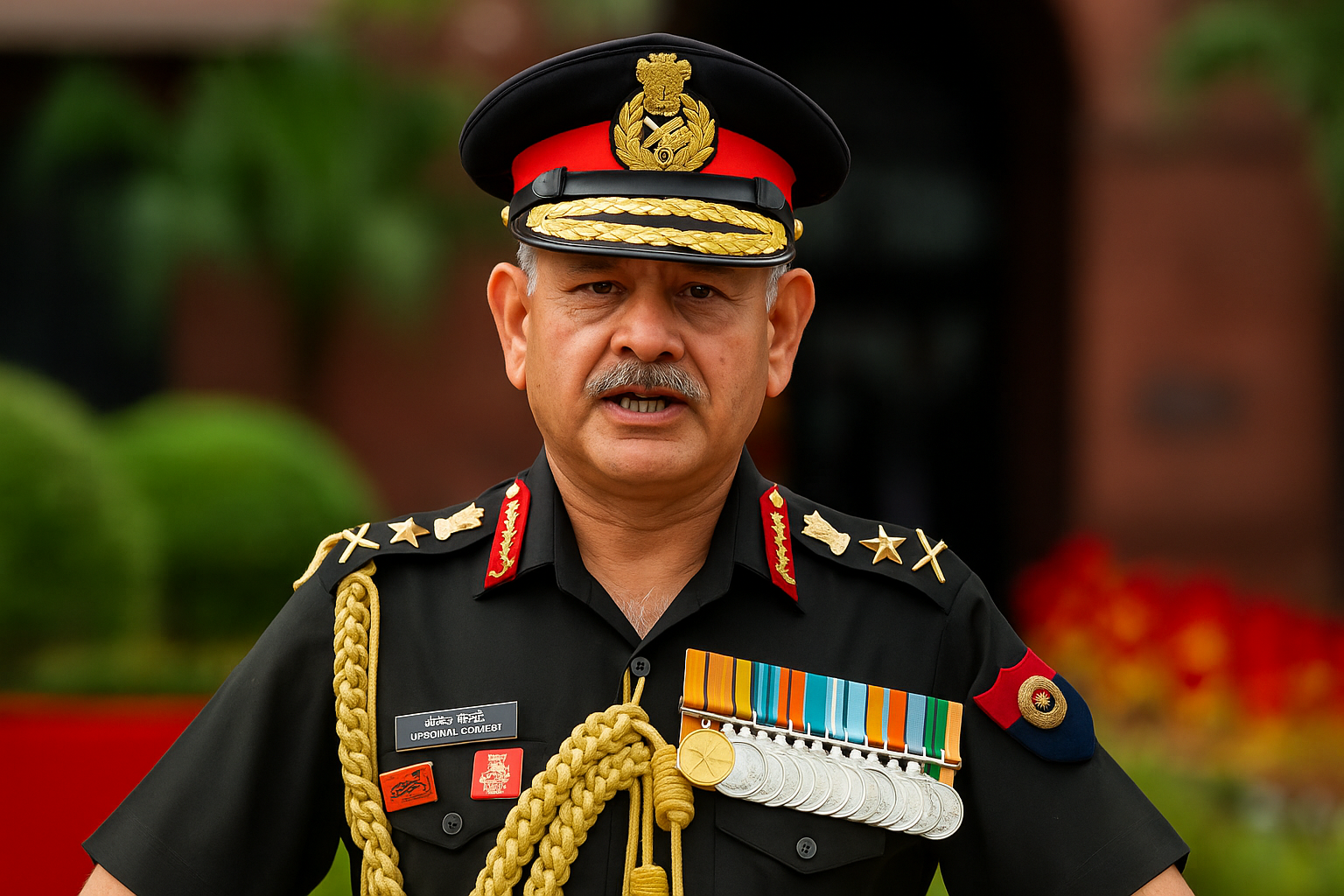In a significant stride towards modernizing its armed forces, the Indian Army has unveiled two pioneering formations: the Rudra Brigade and Bhairav Battalions. These units are central to India’s strategy of enhancing combat readiness and operational efficiency along its borders with China and Pakistan.
Table of Contents
What Is Rudra Brigade & Bhairav Battalions?
The Rudra Brigade is a new-generation integrated combat unit of the Indian Army designed for modern, high-speed warfare. Unlike traditional brigades that focus on a single type of force (like infantry or artillery), the Rudra Brigade brings together all combat elements into one powerful formation, including
- Infantry (foot soldiers)
- Mechanized units (like BMPs and ICVs)
- Armored tanks Artillery guns
- Combat engineers Special Forces
- Drone and surveillance units
- Logistics and medical support
This structure allows a Rudra Brigade to operate independently, respond quickly to threats, and carry out joint operations without waiting for backup from other commands. Think of it as a “mini-army” that’s self-sufficient, high-tech, and ready to strike fast — especially along volatile borders.:

The Bhairav Battalion is a light commando force created to support the Rudra Brigades and carry out specialized missions. These battalions are:
- Highly mobile
- Trained for high-risk operations
- Capable of deep strikes, reconnaissance, sabotage, and anti-terror missions.
They’re modeled on elite forces like Para SF and Ghatak Platoons but are lighter, faster, and more versatile in high-altitude and border conditions — especially along the China (LAC) and Pakistan (LoC) frontiers.
Why Rudra Brigade and Bhairav Battalions Units are Important?
The formation of the Rudra Brigades stems from the need to adapt to the evolving nature of warfare, characterized by rapid mobilization, technological integration, and multi-domain operations. Traditional single-arm brigades were limited in flexibility and response time. By consolidating various combat elements into a single formation, the Rudra Brigades aim to:
- Enhance operational agility
- Improve real-time decision-making Facilitate swift
- Deployment along critical frontiers
- Strengthen deterrence through integrated firepower
Together, the Rudra Brigades and Bhairav Battalions represent a major evolution in India’s defense doctrine: Built for multi-domain warfare (land, air, cyber, drones), Capable of quick deployment in conflict zones. Perfectly suited for future conflicts where speed, tech, and coordination matter more than numbers.
1. Enhanced Operational Agility
The integration of multiple combat arms (infantry, armor, artillery, drones) within the Rudra Brigade will make Indian forces much more agile. This all-arms structure will allow for quicker decision-making and faster response times during conflict situations, reducing reliance on separate specialized units.
2. Strategic Mobility
The Rudra Brigades’ self-sufficiency and quick deployment abilities will allow India to respond rapidly to threats, especially along high-altitude borders like Ladakh and the LoC with Pakistan. This mobility ensures India can maintain a strong deterrent against adversaries and counteract any sudden escalations.
3. Increased Deterrence on Multiple Fronts
The combined capabilities of Rudra Brigades and Bhairav Battalions will strengthen deterrence by providing India with a multi-domain force capable of striking swiftly in both conventional and asymmetrical warfare scenarios. This will send a strong message to potential adversaries about India’s preparedness and ability to defend its borders effectively.
4. Improved Special Operations
The Bhairav Battalions, with their light commando structure, will enhance India’s special operations capabilities. Their specialized training will make them more effective in counter-terrorism and specialized strikes against high-value targets in border regions and urban warfare zones.
5. Technological Superiority
With the integration of drones, UAVs, and precision-guided munitions, the Rudra Brigades will leverage cutting-edge technology for real-time intelligence and targeted strikes. This technological edge will allow Indian forces to conduct operations with greater accuracy and minimal collateral damage.
6. Stronger Border Security
India’s borders with China and Pakistan are among the most strategically sensitive. The Rudra Brigades’ ability to quickly mobilize forces along the LAC and LoC will enhance India’s border security posture, especially in disputed and high-tension areas.
7. Operational Flexibility and Independence
These new formations will have the flexibility to conduct independent operations without waiting for coordination from other units, reducing reaction times and enabling faster deployment of force.
8. Psychological Impact and Moral Boost
The establishment of these elite forces will have a psychological impact not just on adversaries, but also on the morale of India’s soldiers. The increased readiness and capability will foster a strong sense of confidence among troops and create a robust defense culture.
These positive changes will not only bolster India’s defense capabilities but also enable the country to be more assertive in the face of global security challenges. The formation of Rudra Brigades and Bhairav Battalions signifies India’s commitment to maintaining a technologically advanced, ready, and responsive military force.
India's Readiness in Future Warfare
India’s defense strategy is increasingly centered on preparing for future warfare scenarios that demand high mobility, advanced technology, and seamless integration across military domains. Key developments include:
- Drone Integration: Every infantry battalion is being equipped with dedicated drone platoons for surveillance, reconnaissance, and precision strikes.
- Precision Weaponry: The successful test of UAV-Launched Precision Guided Missiles (ULPGM-V3) enhances India’s capability for targeted engagements with minimal collateral damage.
- Logistical Advancements: Emphasis on efficient resource delivery and management, as highlighted during Operation Sindoor, underscores the critical role of logistics in modern combat.
- Air Defense Systems: Deployment of systems like “Akashteer” provides comprehensive airspace monitoring and threat neutralization capabilities.
Operational Capabilities on Borders
The Rudra Brigades and Bhairav Battalions significantly bolster India’s defensive and offensive operations along its borders:
Enhanced Mobility: Integrated units can rapidly respond to threats, reducing reaction time during border skirmishes.
Superior Firepower: The combination of various combat elements within a single brigade ensures a formidable presence capable of deterring adversaries.
Strategic Deployment: The establishment of infrastructure like the Nyoma airfield in Ladakh facilitates swift troop and equipment movement in high-altitude regions.
Specialized Operations: Bhairav Battalions, as light commando units, are adept at conducting high-impact missions, including reconnaissance and targeted strikes, enhancing India’s tactical versatility.
Conclusion: India’s Bold Step Toward Next-Gen Warfare
The formation of Rudra Brigades and Bhairav Battalions marks a decisive shift in India’s military doctrine—one that embraces technology, speed, and multi-domain integration. These future-ready units are not just symbolic upgrades; they are battlefield game-changers designed to operate autonomously in fast-evolving threat environments.
As India faces increasing strategic pressure across both the western and eastern borders, these elite formations provide the Indian Army with unmatched operational flexibility, swift deployment, and high-impact combat capability. Whether it’s deterring hostile incursions along the LAC or responding to asymmetric threats at the LoC, Rudra and Bhairav units are built for the conflicts of tomorrow—today.
With this transformation, India isn’t just modernizing its forces; it’s reshaping the future of warfare in South Asia. Also read about project Vishnu DRDO`s latest development in hypersonic cruise missile.
Operation Sindoor will be in NCERT Class 3-12 books

Pratik Kondawale
Strategist | Indian Defence & Global Affairs
Founder of GeoLens.in, Pratik writes in-depth analysis on India’s defence strategy, military tech, and global power shifts delivering sharp insights through an Indian lens.

Tejas Crash at Dubai Air Show 2025 — A Tragedy, A Lesson, and A Call for Reform
The Tejas crash at the Dubai Air Show turned a moment of national pride into sudden heartbreak when Wing Commander Syal lost his life. This article unpacks the events of that day, explains why the Tejas crash matters for India’s defense readiness, and outlines the practical lessons and reforms needed to ensure the program recovers stronger. It also honors the pilot’s sacrifice and shows how the Tejas crash can become a catalyst for accountability, safer engineering, and faster delivery of operational jets.

Bangladesh EX-PM Sheikh Hasina Death Sentenced: Turmoil in Bangladesh and Rewired South Asian Politics
The Sheikh Hasina death sentenced verdict has detonated one of the most explosive political crises in Bangladesh’s modern history. Delivered in absentia by the International Crimes Tribunal, the ruling blames the former prime minister for orchestrating widespread state violence during the 2024 student protests. The decision has dismantled the Awami League’s long-standing dominance, pushed Bangladesh into a volatile power vacuum, and placed India in the middle of a diplomatic standoff. As questions about justice, political motivation, and regional stability collide, the fallout of this verdict is reshaping South Asian geopolitics in real time.

China with New Air Defence Near Pangong: A Silent Shift in Himalayan Power Balance
China’s new air defence near Pangong marks a major strategic escalation in the Himalayas. Satellite imagery reveals advanced HQ-9 missile systems, radar units, and fortified shelters aimed at asserting Chinese air dominance over eastern Ladakh. This development not only alters the regional military balance but also raises critical questions about India’s preparedness, response strategy, and the long-term implications for border security and geopolitical stability in South Asia.

Afghanistan Pakistan War 2025: Causes, Escalation, and India’s Strategic Advantage
The recent Afghanistan Pakistan war marks a dangerous escalation from border tensions to open state-level confrontation. What began with Pakistani airstrikes inside Afghan territory quickly spiraled into fierce Afghan retaliation, signaling Kabul’s newfound military assertiveness. This conflict exposes Pakistan’s growing vulnerabilities—diplomatic isolation, two-front pressure, and internal instability—while reshaping regional power equations.
For India, the turmoil presents both strategic opportunity and cautious optimism. A distracted Pakistan allows New Delhi to strengthen its influence in Afghanistan and consolidate regional partnerships. Meanwhile, the muted response from Gulf powers like Saudi Arabia and Qatar underscores Islamabad’s weakening alliances. As the Durand Line dispute reignites and media warfare intensifies, the Afghanistan Pakistan war stands as a defining moment in South Asia’s evolving geopolitical order—one that could tilt the balance of power in India’s favor.

Gen Z Protests in Nepal: From Nepo Kids, Corruption, Social Media Ban to Western Interference—What It Means for India
The Gen Z Protests in Nepal go beyond anger over a social media ban—they represent decades of frustration with corruption, nepotism, unemployment, and poor governance. Fueled by rising inflation, scams, and lack of opportunities, Nepal’s youth have taken to the streets demanding accountability.
But behind the scenes, questions of Western interference and U.S. attempts to reshape the world order add a deeper geopolitical layer. For India, Nepal’s instability is more than a neighbor’s problem—it carries direct implications for security, migration, and regional power balance.

Punjab Flood 2025: Lessons from 1988 & Why Punjab Remains Vulnerable
Punjab Flood 2025 has left a devastating mark across the state, with 1,400 villages submerged, 350,000 people affected, and 149,000 hectares of farmland under water. As rivers overflowed and dams released excess water, the disaster exposed Punjab’s recurring flood challenges and the urgent need for long-term resilience.

1 thought on “What Is Rudra Brigade, Bhairav Battalions: India’s Future-Ready Military Units in 2025”